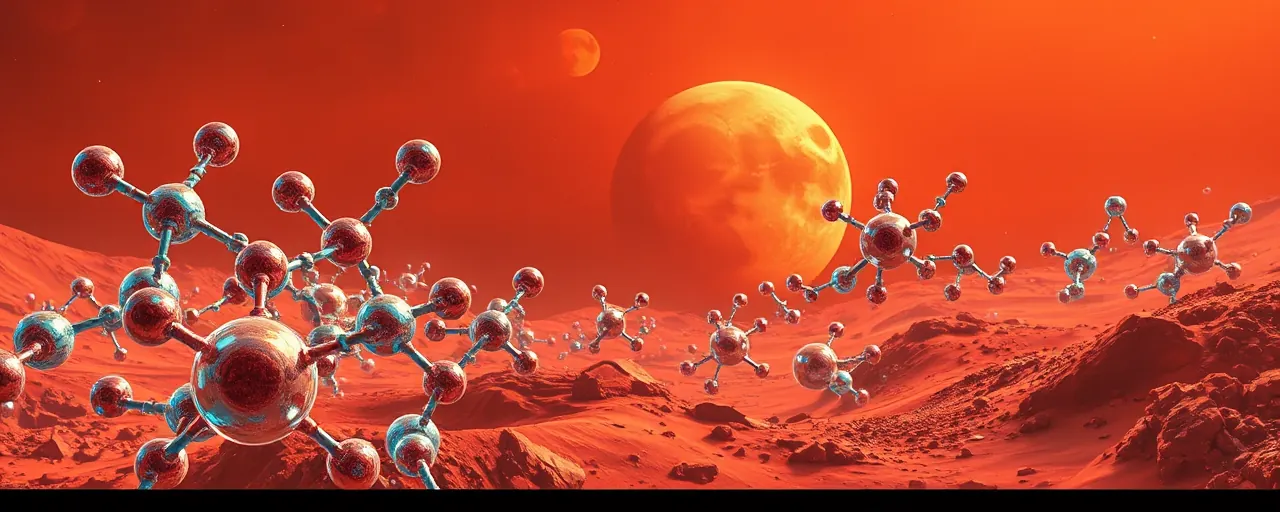A Glimpse Into Mars’ Hidden Past
Deep within the dusty plains of Mars’ Gale Crater, NASA’s Curiosity rover has unearthed a discovery that’s stirring excitement among scientists. Drilling into a rock dubbed 'Cumberland' back in 2013, the rover’s onboard lab recently revealed the largest organic molecules ever found on the Red Planet, offering a fresh peek into its ancient history. These compounds, known as decane, undecane, and dodecane, are chains of carbon atoms that hint at a more complex chemical story than researchers had anticipated.
The find, detailed in a study published this week in the Proceedings of the National Academy of Sciences, isn’t just about rare molecules. It’s a clue to how Mars might have cradled the building blocks of life billions of years ago, or at least sustained the kind of chemistry that could lead there. For those wondering what this means beyond the lab, it’s a step toward understanding whether our nearest planetary neighbor ever hosted anything alive, or if it’s always been a barren world reshaped by time.
Decoding the Molecules
Curiosity’s Sample Analysis at Mars lab, a miniature chemistry kit tucked inside the rover, identified these molecules in a powdered sample from Cumberland, a rock drilled over a decade ago. Measuring 10, 11, and 12 carbons long, decane, undecane, and dodecane are thought to be fragments of fatty acids, organic compounds that play a key role in life on Earth by forming cell membranes. Scientists suspect these Martian versions broke off from larger molecules like undecanoic, dodecanoic, and tridecanoic acids during the analysis process.
What’s striking is that fatty acids don’t always need life to form. On Earth, they emerge from geological processes too, like water interacting with minerals in hydrothermal vents. Without a clear way to pinpoint their origin on Mars, the discovery leaves open a tantalizing question: are these relics of ancient Martian biology, or just the residue of a lively, lifeless chemistry? Either way, finding them intact after 3.7 billion years suggests Mars has a knack for preserving its secrets.
Why This Matters Now
This isn’t the first time Curiosity has sniffed out organic molecules. Earlier finds included simpler compounds, but these larger chains mark a leap in complexity. Researchers see it as evidence that Mars’ chemistry might have edged closer to the intricate reactions needed for life to kick off. Caroline Freissinet, the study’s lead author from the French National Centre for Scientific Research, notes that detecting such molecules today proves they can survive the planet’s harsh radiation and oxidation, a hurdle that had worried scientists hunting for signs of past life.
Beyond that, the discovery fuels hope for future missions aiming to haul Martian rocks back to Earth. Daniel Glavin, a senior scientist at NASA’s Goddard Space Flight Center and a co-author, argues it’s time to bring samples home for analysis with tools far more powerful than anything Curiosity carries. Advocates for this approach say it could settle debates about Mars’ biological past, while others caution that even the best labs might struggle to distinguish life-made molecules from those forged by nature alone.
The Ancient Lake That Keeps Giving
Cumberland hails from Yellowknife Bay, a spot in Gale Crater that once cradled a lake. Packed with clay minerals formed in water, sulfur to shield organics, and nitrates vital to Earth’s ecosystems, this ancient lakebed is a treasure chest of chemical hints. Scientists confirmed years ago that liquid water lingered here for millions of years, long enough for complex reactions to unfold. Add in methane tied to a carbon type linked to biology on Earth, and Yellowknife Bay starts looking like a prime spot where life, or at least its precursors, might have thrived.
Historical studies paint a broader picture. Mars’ Noachian era, stretching back over 4 billion years, featured valley networks and hydrothermal systems tied to volcanic heat. These conditions mirror Earth’s early days when life took root. Researchers exploring similar sites, like the Eridania paleolake, point to mineral deposits suggesting Mars once buzzed with the kind of energy and chemistry that could spark something living. Yet, without direct evidence, the leap from possibility to proof remains a steep one.
Looking Ahead
The Cumberland find came unexpectedly during a search for amino acids, the protein building blocks that Curiosity’s lab didn’t detect. Instead, the team stumbled on these fatty acid fragments, a twist that highlights how much Martian rocks still hide. Advances in tools like microchip electrophoresis and laser-induced fluorescence, tested in labs to spot faint traces of organics, promise sharper insights for missions like ExoMars or Dragonfly. For now, though, Curiosity’s limits underscore the need for samples to face Earth’s cutting-edge instruments.
Plans to retrieve those samples are underway, with NASA and the European Space Agency eyeing the 2030s for a Mars Sample Return mission. Costing billions and fraught with technical hurdles, it’s a gamble that could redefine our grasp of Mars’ past. Supporters argue it’s the best shot at finding biosignatures too delicate for rovers to catch, while skeptics question whether the payoff will match the price tag. Whatever the outcome, these molecules from Cumberland have already shifted the conversation.
